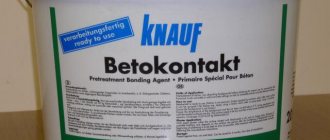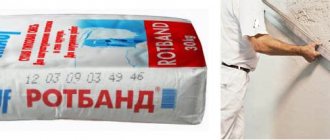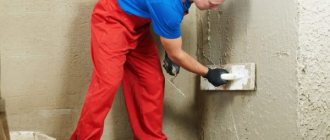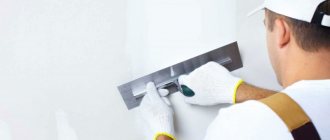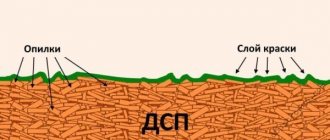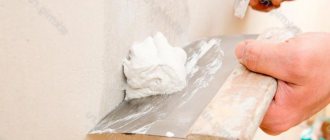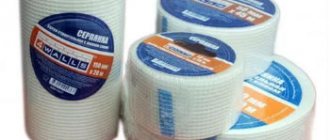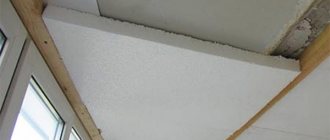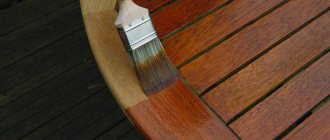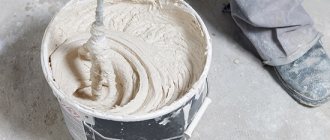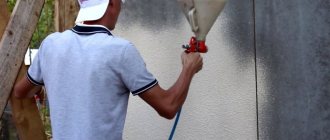Types
Depending on what stage of the repair work is planned to be performed, putty is selected:
- starting - a mixture intended for leveling various surfaces in the initial stages. The grain size of the components is coarse, so after preparing the solution and applying it to the walls, a roughness is visualized, which is difficult to sand. It has high adhesion and strength, which indicates a long service life. Acts as a base;
- finishing - used after the starting one, smoothes the plane, giving the effect of polishing a snow-white color. No sanding required;
- universal - serves as both a starting and finishing putty. Designed for both leveling surfaces and preparing before decorative finishing.
Composition and technical characteristics
The main technical characteristics include:
- snow-white shade;
- economical consumption (it all depends on what layer of the mixture is supposed to be applied to the wall);
- excellent adhesion;
- frost resistance;
- long shelf life (up to a year).
Each manufacturer indicates its technical characteristics on the packaging. They produce dry and paste putty in containers of various weights.
Consumption per 1 m2
The packaging of universal putty, regardless of the manufacturer’s brand, must indicate the material consumption per square meter. The calculation of the required amount of product is determined precisely from this information. However, such a calculation is realistic if there are smooth walls. Therefore, if the surface of a wall or ceiling is far from ideal, then it is better to purchase the material with a small margin, since the thickness of the applied layers in different places may differ.
Recommendations
Using putty, you can very quickly and without much difficulty eliminate small or medium-sized irregularities, cracks or chips on the surface of the walls. It all depends on the type of composition that is intended to be used.
When carrying out repair and finishing work, it is worth understanding that the finished putty for the ceiling is slightly different from that used for walls. This is due to the fact that the ceiling surface is horizontal, which is why too liquid compositions will simply flow down from the surface, making it impossible to form an even coating.
The main condition for ceiling putty is the thickness of the composition and high adhesion. Obviously, you first need to carefully prepare the surface so that the composition can properly adhere to the ceiling surface of the slab.
One of the most important tips for choosing a mixture for both wall and ceiling coverings is that you should not consider the economy segment. Of course, it is much cheaper, and at first glance it seems that the composition is virtually identical to the higher class.
But in fact, economy mixtures are less durable, which is why very soon you will have to do repairs again, completely cleaning the surfaces to a rough finish.
Peculiarities
Planning a renovation entails a careful selection of building materials. It will not be superfluous to get advice from specialists who will advise one or another form and type of putty, based on the information received about the condition of the wall being treated, its location, the level of humidity in the room and other factors.
Attention: The peculiarities of the choice are that when purchasing a universal putty, it is important to select all the necessary tools from the same company.
Advantages and disadvantages
Thanks to its unique structure and the correct combination of components, the universal putty is excellent for application on any surface (smooth or rough):
- concrete;
- wooden;
- glass;
- brick;
- metal.
This feature is due to the fact that the finished solution reliably adheres to the plane, having excellent adhesion. Even if the surface is created absolutely smooth, the coating will not peel off or crack in the future, destroying the integrity, and, accordingly, the quality of the finish.
The main advantages include the following properties:
- environmental friendliness - absolutely harmless, which allows the mixture to be used for interior finishing work;
- fast hardening speed – speeds up the process of putting the facility into operation;
- moisture resistance - does not collapse under the influence of precipitation;
- cost-effectiveness - finishing the room requires less mortar than analogue (gypsum) ones;
- low price – optimal price-quality ratio;
- fire safety - does not ignite upon contact with fire;
- durability - the treated surface can last for a long period of time without losing its former attractiveness and integrity;
- strength – a high-quality surface does not collapse under physical or mechanical stress;
- resistance to the appearance of fungi - the composition includes components with antiseptic properties;
- ease of use - even novice builders or amateurs can work with the composition;
- frost resistance - tolerates up to -40 degrees;
- multifunctionality - can be applied to surfaces both outside and inside the house.
Important to know: The moisture resistance rating of different manufacturers may vary, which limits the scope of application of the putty.
Despite all the advantages of this building material, there are also disadvantages:
- The prepared solution cannot be stored for long. In this regard, the mixture must be kneaded in small volumes;
- If a layer thickness of 10 mm is required when leveling out unevenness, then it is better not to use universal putty as a starting putty.
Types of ready-made mixtures
When considering the question of which ready-made putty is best to choose, it is worth understanding that they differ in the components in their composition. There are 3 main types, each of which is used in certain conditions.
With the addition of cement
This type of putty is the most popular due to its simplicity and prevalence. The advantage is that the surface gains good resistance to weathering and moisture.
In addition, the surface “breathes”, with the help of this putty you can repair cracks and chips, because it has fairly good adhesion and is perfect as a preparatory step before laying decorative material.
Gypsum based
Ready-made drywall putty is very popular for finishing bathrooms. It has good resistance to moisture, but at the same time it is vapor permeable.
It goes well with materials based on gypsum and gypsum fiber. It is worth considering that this composition sets very quickly, so you need to work as quickly as possible.
Acrylic
Ready-made acrylic facade putty is perfect for both exterior and interior decoration. However, it is worth considering that if you decide to use this composition for exterior finishing, you need to apply a primer on top to protect the composition from moisture and weather conditions.
Tile, or siding or any other material for external decoration of facades is laid on top.
Among the advantages of this composition are environmental friendliness and high fire resistance of the composition, which allows for additional protection of building facades from exposure to open fire or sparks.
Latex
It is mainly used only for interior wall decoration.
- The advantage of this type is the ability of the composition to stretch up to a layer of 1 mm, which can greatly reduce material consumption.
- Designed for rooms with normal humidity levels, therefore not recommended for finishing bathrooms and kitchens.
- The composition is not vapor permeable and does not shrink, which is a relative advantage in certain conditions.
Based on PVA
This type of putty is used in rooms with normal humidity and microclimate. It is intended solely as a preparatory step for further wallpapering.
This type cannot be used as an independent material, because it does not have a sufficiently thick composition, but it can easily correct small cracks and chips.
Mode of application
Working with putty requires following actions in a certain sequence, namely:
- Before starting work, the surface is cleaned and degreased. All existing cracks and gaps expand;
- the walls are primed and dried well;
- Reinforcing mesh should be applied to areas of the wall where there are defects and crevices. The same actions are carried out in all available corners;
- Before application, the putty must be thoroughly mixed;
- To work with putty, use a wide spatula. When applying the material to the wall, the movements must be clear. The mass must be compacted and leveled at the same time. The optimal thickness of the applied layer is 1 mm;
- after finishing applying the putty, the wall should dry well within 24 hours;
- repeat the process if necessary.
Tips and recommendations for use
It is best to go to specialized stores to buy putty to renovate your home. Sales consultants will advise and calculate the required amount of the finished mixture. You should choose the highest quality brand, since the key to successful repairs depends on this. Working with ready-made putty will speed up the process much. In Moscow and other big cities there should be no problems finding universal putty.
The surface on which it is planned to apply universal putty in the future must be treated with a special product - a primer. Despite the fact that the work is carried out with environmentally friendly materials, it would not be superfluous to open the window slightly for ventilation. This precaution will prevent possible illness.
If the final goal is to level the walls with subsequent wallpapering, then you can purchase dry mixtures and, as far as possible, dilute them in the required proportions to complete the task. If the surface is to be painted in the future, then it is optimal to use a ready-made composition. Thanks to its excellent adhesion, the universal putty can be used for surfaces of any complexity when performing restoration work.
On sale, the universal putty is presented in two states - dry and paste. The second option is more expensive than the first. It is recommended to dilute the dry mixture in small quantities so that the mass does not harden before it is applied to the surface. Despite the fact that universal putty still has disadvantages, it rightfully occupies a leading position among competitors in the building materials market.
Features and varieties of ready-made putty
The finished putty for walls will only have to be carefully placed on the object until it forms a paste, after which it can be applied.
The composition is supplied already in a bucket, so there is no need to use an additional container for stirring.
All that remains after purchase is to add a little water to the bucket and mix the composition thoroughly to prepare the putty. By using a ready-made mixture, you can save a lot of time and effort because you don’t have to mix the ingredients yourself.
